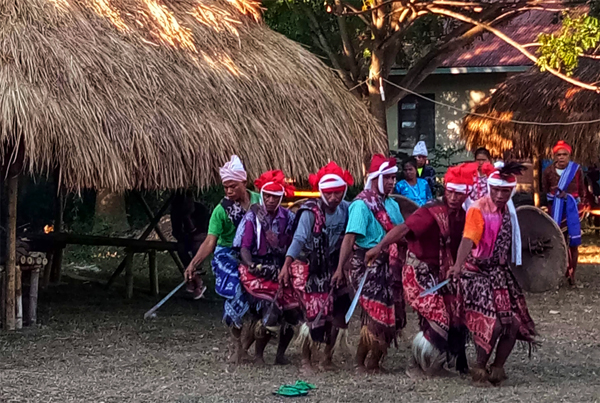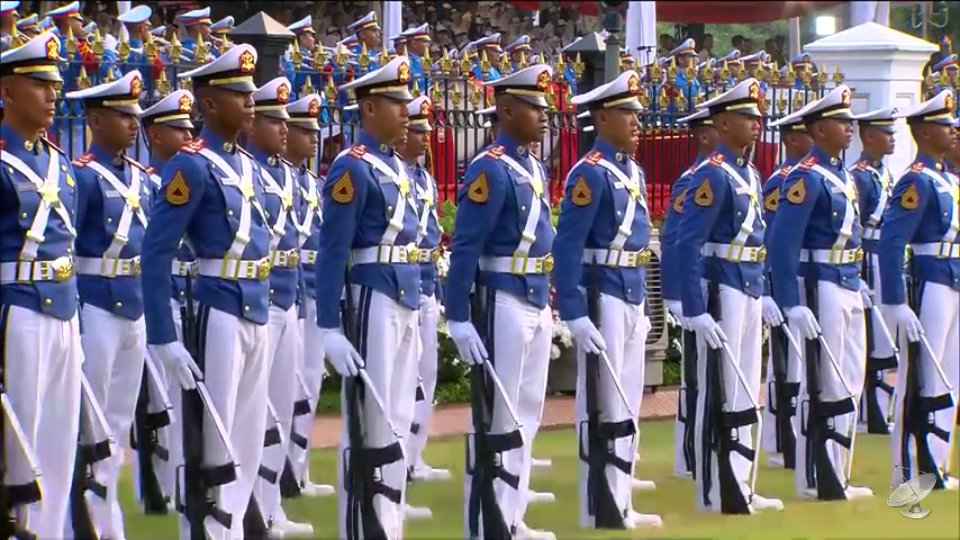In practice, religion (agama) in Indonesia has been paradoxically interpreted exclusively; religion must have monotheistic belief, written scripture, prophet, and international recognition… Among the implications are the exclusive accommodation of six “official” religions (Confucianism, Buddhism, Hinduism, Catholicism, Christianity, and Islam) by the Ministry of Religious Affairs (MoRA) and the exclusion of Indonesian indigenous religions from the scope of religion. In terms of advocacy, the indigenous are unable to claim their rights (to customary forest/land, for example) in the name of religious freedom, whose discourse is dominated by cases of blasphemy and the construction of houses of worship, writes Krisharyanto Umbu Deta
_______________________________________________
Indonesia included religious freedom in its constitution (Undang-Undang Dasar 1945) even before the Universal Declaration of Human Rights in 1948. Religious freedom was also strengthened through the addition of human rights law in the amended constitution in 2000. In Article 28E (1) and (2) of the Constitution, it is stated that “Every person shall be free to choose and to practice the religion (agama) of his/her choice” and “Every person shall have the right to the freedom to believe his/her faith/belief (kepercayaan)”. Meanwhile, Article 29 (2) stipulates that “The State guarantees all persons the freedom of worship, each according to his/her own religion (agama) or belief (kepercayaan)”. Thus, the Indonesian Constitution has arguably laid a strong foundation for religious freedom.
In practice, religion (agama) in Indonesia has been paradoxically interpreted exclusively; religion must have monotheistic belief, written scripture, prophet, and international recognition. These prerequisites were initially proposed by the Department of Religion (now: Ministry of Religious Affairs) immediately a year after its establishment in 1946. Although this problematic construction has never been officially formalised, it continues to be perpetuated in socio-political spheres and, to some extent, in knowledge production. Among the implications are the exclusive accommodation of six “official” religions (Confucianism, Buddhism, Hinduism, Catholicism, Christianity, and Islam) by the Ministry of Religious Affairs (MoRA) and the exclusion of Indonesian indigenous religions from the scope of religion. In terms of advocacy, the indigenous are unable to claim their rights (to customary forest/land, for example) in the name of religious freedom, whose discourse is dominated by cases of blasphemy and the construction of houses of worship.
Following the growing discourse of democratisation and human rights enforcement after the fall of the New Order authoritarian regime in 1998, the academic study of religious freedom also started to develop. Meanwhile, the effort to engage indigenous studies and movements with the language of religion and religious freedom in Indonesia is just beginning in the past five years. Considering the advancement of recognition towards peoples of indigenous religions, Indonesia might have a considerable contribution to the global discourse of indigenous religious freedom.

Who is the Indigenous?
The current Indonesian government system recognises the people of indigenous religions as penghayat kepercayaan (followers of belief) and masyarakat adat (indigenous people), as both are mentioned in the constitution and several regulations. People of these categories are accommodated under the Directorate of Belief and Indigenous People, Ministry of Education and Culture. Due to the constructed differentiation of religion (agama), kepercayaan, and adat, kepercayaan has a more religious sense, compared to adat whose use and meaning are closer to that of ‘indigenous’. In society, both are often considered inferior to agama and thus imply the need to convert to “official” religions.
Nevertheless, the indigenous lived religious affiliation and experience are more complex than what is registered in the civic administration. There are those registered as penghayat but also practising adat, registered as agama but (also) practising indigenous religions (kepercayaan and adat), and those registered as adat and agama and practising agama in their indigenous ways. There are also those declared to be part of a spiritual group, not agama nor kepercayaan. The intersection is for sure more diverse than these examples. Hence, the category of ‘indigenous religion’, mainly used in academia, must be open and inclusive, not a limiting one. To not repeat the problematic reification of ‘religion’, those aforementioned subjects must all be perceived as mutually constitutive of the term and discourse of indigenous religion. The acceptance and rejection of the identification with certain categories can be understood in the context of ‘indigenous religion’ as a constructed term for living traditions articulated differently in polyphony and cacophony.
The advancement of recognition towards indigenous religions
The regulation frequently used to justify the exclusive interpretation of religion in Indonesia is the Blasphemy Law (PNPS 1965). This document mentions the six religions claimed to be “embraced by the majority of Indonesians”. In the other parts, this law also mentions kepercayaan as suspicious groups that need to be “directed to not deviant perspective and in accordance to the One and Only God”. This law has been brought three times (2009, 2013, 2018) to Constitutional Court for judicial review but never repealed. However, the Court decision in 2009 provides some significant and progressive interpretations of the law in the framework of the Indonesian constitution regarding religion. It states that this law “does not limit recognition and protection towards six religions” but “recognizes all religions embraced by Indonesians” who “are given full guarantee as granted by Article 29 point 2”. Related to kepercayaan, the court states that they are also equally recognised and respected.
Another Constitutional Court decision more specifically dealt with kepercayaan was issued in 2017. The court accepted all the appeals regarding the Civic Administration Law that previously disallowed people outside the six religions, including kepercayaan that is called “religions not yet recognized”, to put their religious identity in the column of religion in their identity card. The decision boldly states that “the word agama (referring to the six religions) in that law is against Indonesian Constitution and does not have binding legal force if it does not include kepercayaan”. In the judges’ explanation on which this decision is based, they (re)interpret “the right to embrace agama, which includes the right to embrace kepercayaan, as part of human rights in the group of civic and political rights”, meaning that it is based on the principle of natural rights and thus inherent in all human beings without necessarily given recognition by the state.
Kepercayaan: desacralizing religion, extending FoRB
The stipulation that agama is unconstitutional if not including kepercayaan has considerable significance to the governance of religion and religious freedom in the country. One most recent example is the inclusion of kepercayaan in all religion-related points in Indonesia’s new Criminal Code (KUHP). Anywhere agama is mentioned in the law, kepercayaan is also there. This is in line with the growing recognition of kepercayaan through the aforementioned court decisions. In this regard, kepercayaan continues to be more constitutionally established, although the initial insertion of the term -encouraged by a penghayat who later became the chief of the kepercayaan coordinating board organization- in the drafting of the 1945 Constitution was not meant for a certain entity other than agama but beliefs in a broader sense. However, the advancing recognition of kepercayaan has been a meaningful disruption to the long-standing ‘sacralization’ of the six as the only religions and thus should also have further implications for the discourse, norms, and practices of religious freedom.
While the problematic interpretation of religion excluding indigenous religions is prominent in Indonesian and global discourse, kepercayaan has been a new word for religion. The court (2016) interprets kepercayaan as equal to, although different from, agama since the wording of the two in the constitution uses “or” as the conjunction. It also implies that kepercayaan is not a form of religion like Christianity or Islam. Rather, equal to agama, which is a general term for various religions, is kepercayaan for various indigenous religions. In this regard, the discourse of kepercayaan has desacralized religion/agama and would potentially contribute to the global discourse of indigenous religion.
By enriching the language of religion and providing an alternative for those excluded from “religion”, kepercayaan could also extend the scope of Freedom of Religion or Belief (FoRB). As the equivalent of agama, kepercayaan becomes a concrete form of “belief” (in Indonesia, translated as keyakinan) in the framework of FoRB. While meant to accommodate forms of belief other than religion, like atheism or agnosticism, “belief” has been no more than a symbolic recognition. The discourse of FoRB is highly dominated by religion-related issues with a very specific, if not exclusive, framework. In Indonesia, cases of blasphemy, violence against religious minorities, and the construction of houses of worship involving Christians and Muslims are among the well-known stories of FoRB. As a concrete form of belief other than agama, the inclusion of kepercayaan means an extension of subjects and issues advocated in the name of FoRB. It means the paradigm of “religion”, and thus FoRB must be improved.
The unfinished making of Indonesian Indigenous religion
As a consequence of the constitutionality of kepercayaan, all religion-related regulations, policies, and any governance of religion in the country are unconstitutional if excluding kepercayaan and religions other than the six. Among them is the regulation of religious education and other exclusive accommodations and services for the six religions. Based on the elucidations of the Constitutional Court as the most authoritative interpreter of the Constitution, those ‘unconstitutional’ legal documents and practices must be reformed by the government and legislators. Otherwise, it could be challenged by civil society initiatives through judicial review as previously done. Doing so might at once solidify the constitutionality of more inclusive governance of religion and religious freedom by firmly explicating its implication on the fulfilment of citizenship rights of those followers of the “unofficial/unrecognized” religions.
Despite the necessary legal improvement, kepercayaan itself, as the constitutional basis of indigenous religion(us) freedom, must not resemble the exclusive feature of agama. As penghayat kepercayaan and masyarakat adat are now governed by the Ministry of Education and Culture, both are defined by either government or their organisations in ways that potentially limit their scope. As some scholars suggest, kepercayaan should not be a new boundary of religious identity. For the sake of inclusive indigenous religious freedom, the making of kepercayaan should also include the adat elements and subjects who arguably have more concerns about land rights and environmental issues. This is especially due to the consideration that the categories of agama, kepercayaan, and adat are constructed terms. In reality, they are used interchangeably by subjects who in this regard are proposed to be recognised as indigenous religion and advocated in the name of religious freedom.
______________________________________________
*Banner photograph of the Marapu Indigenous Community on the island of Sumba. Photo by and copyright of Samsul Maarif.
*The views expressed in the blog are those of the authors alone. They do not reflect the position of the Saw Swee Hock Southeast Asia Centre, nor that of the London School of Economics and Political Science.




